Discover the New Era of Narrowbody Longhaul Business Class Seats
With the introduction of new long-haul narrowbodies, such as the Airbus A321neo LR and XLR, seatmakers are offering a myriad of new Business Class seats
by John Walton
August 29, 2023
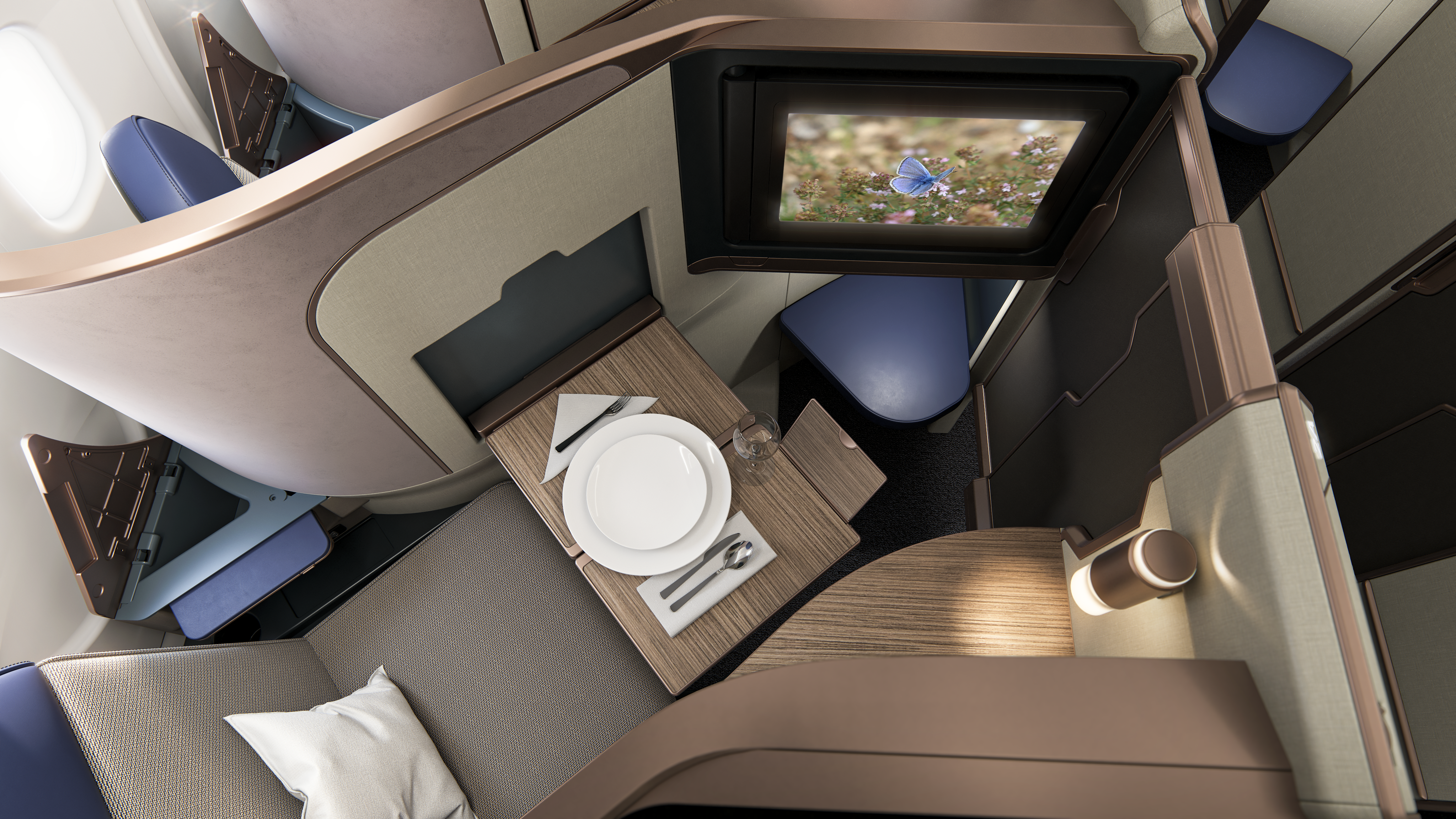
Photo: Courtesy of Collins Aurora
Since the days when the good old Boeing 757 was the only long-haul narrowbody aircraft in town, the best business class you’d get on a single-aisle plane was a flatbed in a 2-2 layout, meaning that the window passenger had to clamber over their sleeping aisle neighbor to get out.
It’s awkward if it’s your partner, even more awkward if it’s a random stranger or Pat from Marketing next to you.
But no more: with the new generation of long-haul narrowbodies—particularly with the Airbus A321neo’s long-range (LR) and extra-long-range (XLR) versions—come a half-dozen new seats.
All of them go fully flat, offer direct access to the aisle for every passenger, and all can close a privacy door to cocoon yourself away from the rest of the plane. And, good news: all are great for the five-to-nine-hour flights that these long-haul narrowbody planes will be flying.
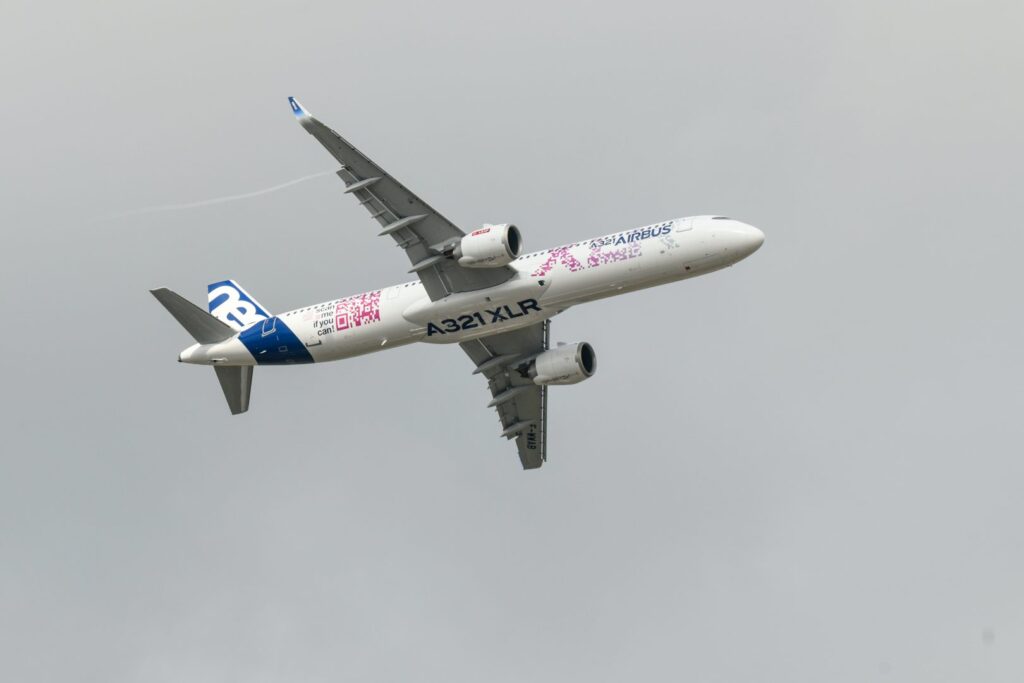
Photo: Airbus A321XLR, Paris Air Show 2023. Courtesy of SIAE 2023 Gilles ROLLE
Also, you might be surprised to learn that herringbone seats — either the inward-facing version where your head is next to the window, and you face the aisle, or the outward-facing version where your head is next to the aisle, and your feet point towards the window.
Why? Well, in what may seem like a bit of a contradiction, the space for narrowbody business seats is actually much wider per seat than on widebodies. If you think about it, each side of the aisle on a narrowbody is the equivalent of three economy seats. That’s not true even on the biggest widebodies like the Airbus A380 or the Boeing 747, where the center sections max out at four seats in the 3-4-3 configuration.

Photo: Business Class, Boeing 777, featuring a 2-3-2 configuration. Courtesy of Emirates.
What that means for you, the passenger, is that the kind of staggered seats you might enjoy — as, say, the Qatar Airways Qsuite or the Delta One Suite — are the wrong shape to fill this space most efficiently. So, if you strongly prefer those seats compared with herringbone suites like on Air France or the new British Airways Club World, long-haul narrowbodies may not be your first choice.
You might also have strongly held opinions about inward versus outward herringbones on widebodies, and by and large, those opinions will hold on the narrowbody herringbone equivalents.
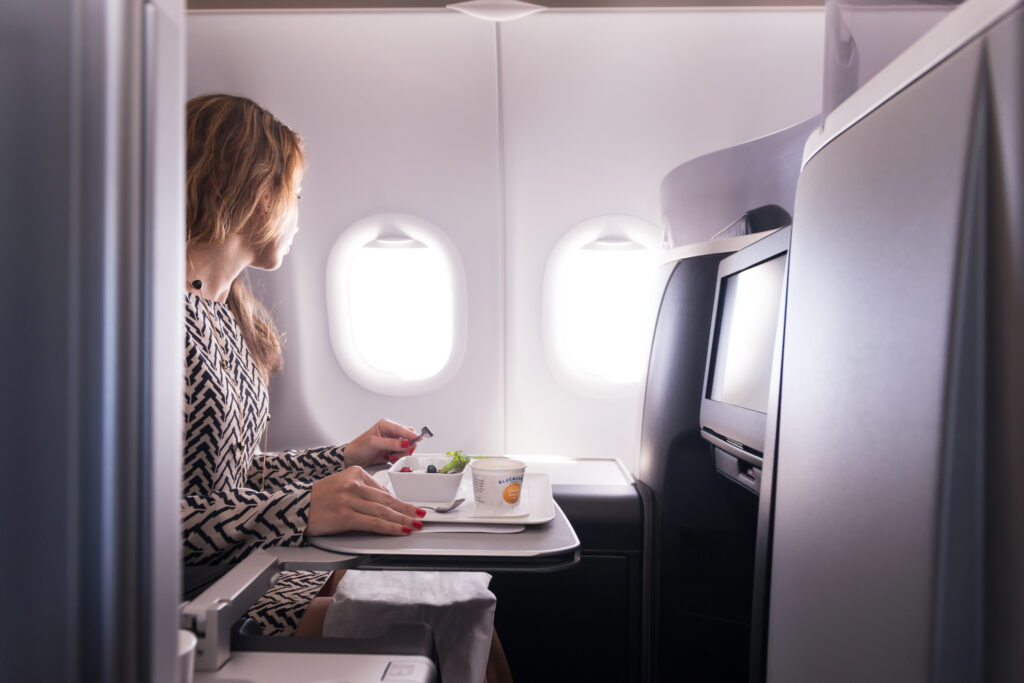
Photo: Courtesy of JetBlue
If you hate turning your head to look out the window, the inward-facing ones won’t be your favorite seats, and similarly, if you don’t like the idea of people walking behind you that you can’t see, then the outward-facing seats won’t be your jam.
One key difference, though, is that the outward-facing herringbones have a little more foot space than you might expect since they have supporting structures that mean your feet go all the way to the sidewall of the airplane rather than being constrained in a little foot box.
On that note — on to the seats!
Thompson Vantage Solo: Inward-facing
If you know JetBlue‘s new Mint Suites, you know Thompson’s Vantage Solo seat. It was one of the very first seats initially created to fit the narrowbody airplane space and comes with a door and a no-door option.
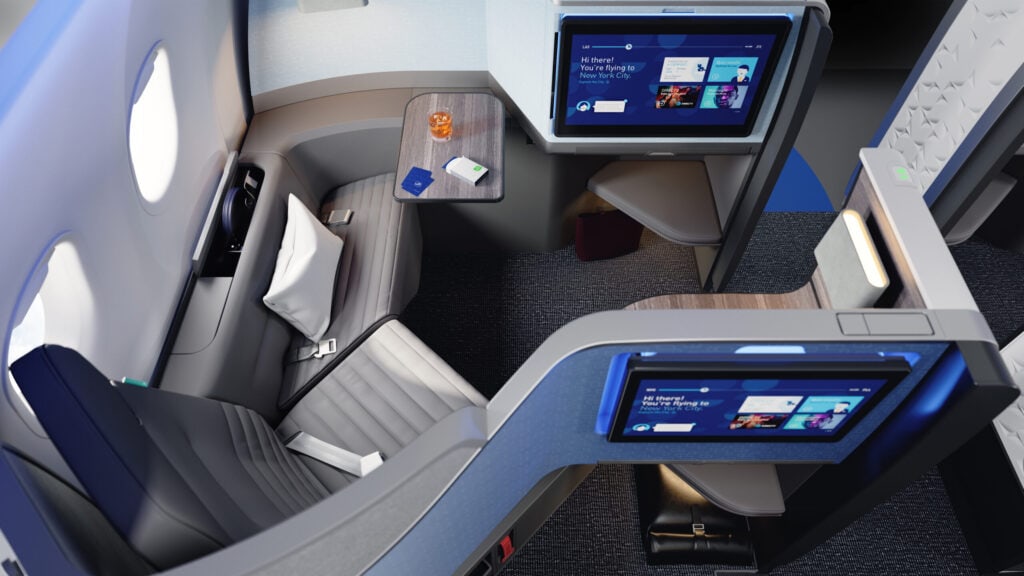
Photo: Courtesy of JetBlue Airways
Since it was first to market, Solo is the point of reference for the entire category, and it’s a solid all-around seat for this medium-to-long-haul market.
Collins Aurora: Inward-facing
American Airlines quietly revealed the seat now known as Collins Aurora late last year as part of its new premium cabins. It was also on display at the Aircraft Interiors Expo this summer, and it’s a very decent player in this class.
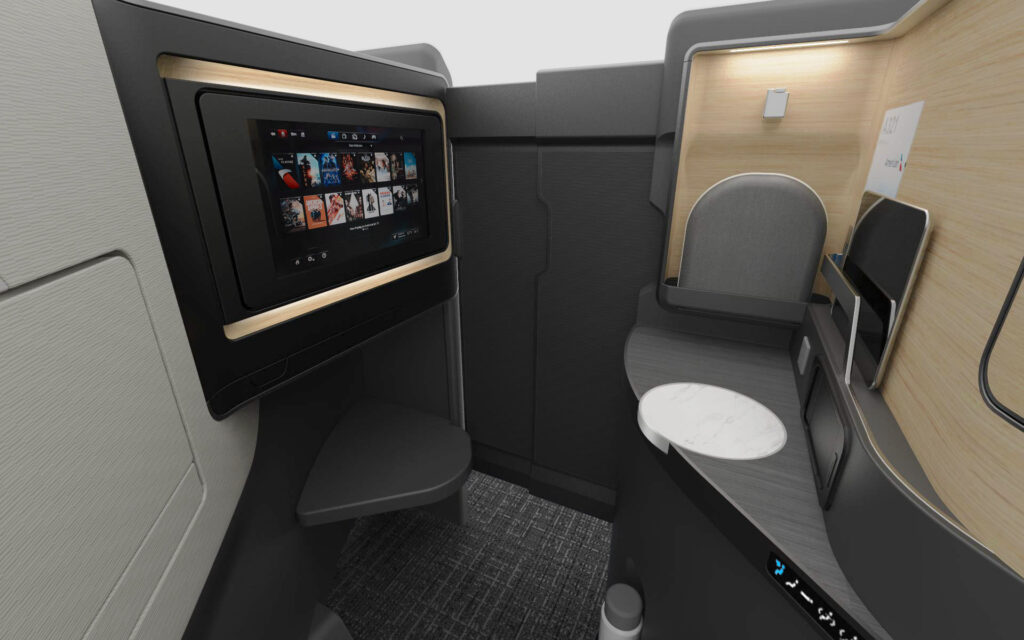
Photo: Courtesy of Collins Aurora / American Airlines
It differs slightly from Solo in that the table is in the side console rather than the wall, and the monitor assembly is a little thicker. Again, it’s an excellent seat in the 5-10-hour category.
Stelia Opera: Outward-facing
We move to the outward-facing seats with Airbus subsidiary Stelia’s Opera, a pleasingly spacious suite within the narrowbody world.

Photo: Courtesy of Stelia Opera
It’s one of the few options with an inflight screen that is installed facing you rather than on a pivoting arm, which means gate-to-gate onboard entertainment — on some of the other seats, you’ll have to stow the monitor out of view before takeoff and in advance of landing, and on a short overnight flight that’s a bit of a pain.
A special shoutout to the delightfully whimsical swing-out storage space within the side console, which rotates like an old-fashioned jewelry box.
Safran Vue: Outward-facing
French seatmaker Safran’s narrowbody suite is Vue, which stands out from the crowd in its foot space — the design of the structure means that the bed mode feels optimized for foot and leg space, which is great for the taller traveler — and in the shape of its seat cushion.
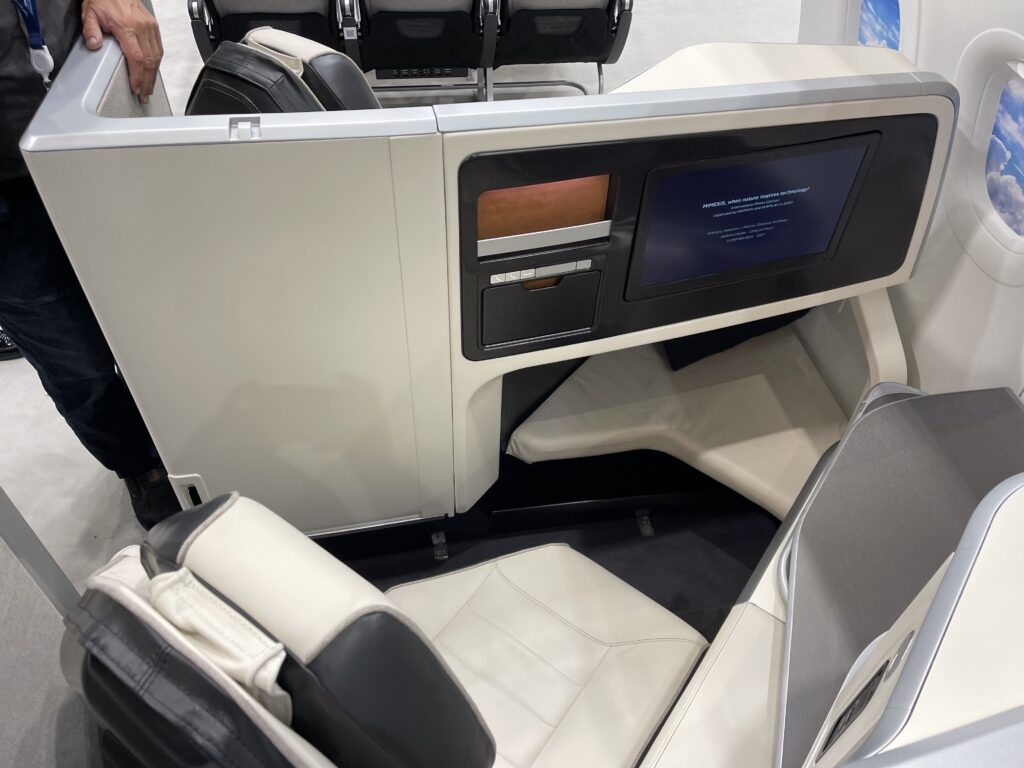
Photo: Safran Vue. Courtesy of John Walton
This seat cushion, which looks like it has a slice taken out of it, is probably the biggest issue with the seat because it means that your forward leg isn’t fully supported. There’s a reason that comfortable chairs on the ground aren’t shaped like this.
So why the triangular slice? There are regulations around how much space must be left for you to get in and out of the seat in an emergency (that’s nine inches if you’re measuring), and to get more seats in the cabin, Safran has carved this bit out.
Adient Ascent: Outward-facing
The third outward-facing herringbone seat comes from Boeing’s joint venture with automotive seat maker Adient, Ascent. It’s a version of the seat that Qatar Airways introduced on its latest Boeing 787 Dreamliners, which American Airlines will use as its future Boeing 787’s Flagship Business, and it’s a popular seat that’s well-received by travelers.
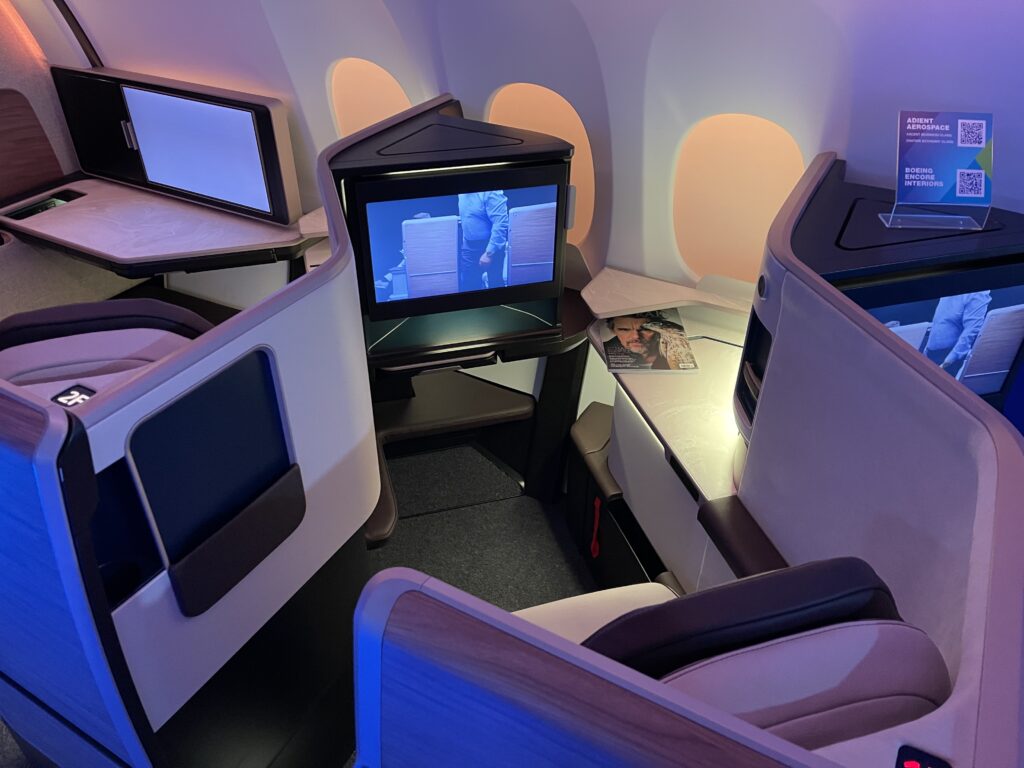
Photo: Courtesy of Adient Ascent
Crucially, the version that Adient has been showing — with the front-row business-plus suite that has the secret automatic press-for-Champagne bar — is optimized for the 737 MAX, which is unusual since the A321neo’s LR and XLR variants have overwhelmingly won this market. There’s also an A320neo family version, of course.
Adient Altitude: Inward-facing
Revealed in public for the first time on a strictly no-photos basis behind closed doors at the Aircraft Interiors Expo — which is why it’s coming last on this list — is Adient’s second seat for narrowbodies, Altitude.
An inward-facing herringbone, it’s much more compact than Ascent, but there’s an almost invisible design tweak in the three-dimensional sidewall structure that means you get extra usable space at the same spacing compared with other seats in this class.



